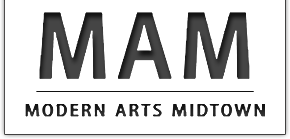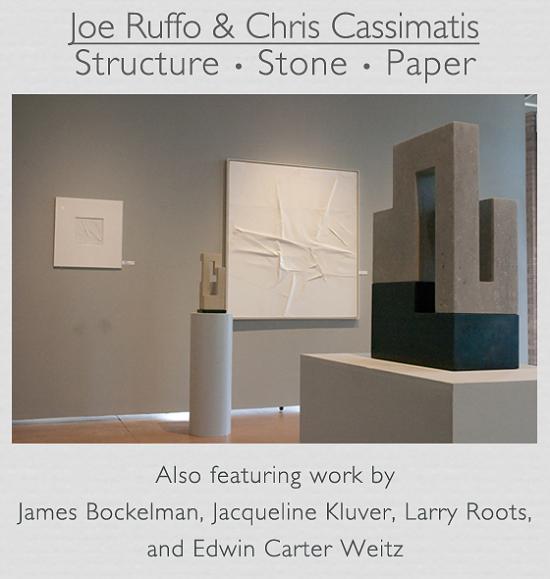About the exhibition - by Michael J. Krainak, free lance writer in the visual arts
We take a lot for granted when we see a beautiful or extraordinary work of art, not unlike our reaction to a sunset or mountain vista. We accept what Mother Nature creates for our pleasure and are at least grudgingly in awe of her wrath. Artists are also often taken at face value. For many viewers it’s enough to just know what we like or don’t like.
But while more immediate and familiar properties of art such as content and palette may win one’s attention, a true appreciation is attained with something more. That “something” is more than a look or style, as even a hobbyist or amateur may have either. One mark of committed artists can be measured by examining process—how they give their work its shape and unity. The result is an enlightened viewer not unlike one who recently toured Modern Arts Midtown with owner Larry Roots and came away with a newfound respect for the complexities of abstraction.
To that end, MAM’s fall trilogy of exhibits emphasizes two underlying qualities of an artist’s aesthetic and vision: structure and form. It begins in September with two artists, Chris Cassimatis and Joseph Ruffo, who in their exhibit, Structure/Stone/Paper, offer in complimentary 3D forms contrasting materials, structure and point of view. Yet for all their differences, the two artists connect and respond to the same external influences, nature and the built environment
Cassimatis is a full-time sculptor here in Omaha who has exhibited in Portland, Ore., his hometown of St. Louis and in the Metro. Thus it is safe to say that his metal and stone sculptures are the product of his familiarity with a man-made, big city landscape. Though somewhat figurative in form, his largely abstract work, in the Edifice series on display here, consist of what he describes as “allusions to architectural features such as passageways and balconies. The use of ninety degree corners creates strong shadows and dramatic spaces that reflect their surroundings and reveal beauty in familiarity.”
Cassimatis is particularly adept at creating 3D work “designed to surprise the viewer as they walk around it and yet remain balanced and grounded.” This is especially true of such pieces as Landscape with Stilts, an organic form of carved stone given an infrastructure of stainless steel legs. Other sculptural work including Perceptual Apparatus IX explores the interactive nature of mechanical devices; while Empennage and Confluence demonstrate a propensity to push the fluidity of stone as structure.
All of which more than hints at Cassimatis’ precise preparation as "in the Edifice Series each piece is fully designed before I begin carving. I start by drawing on graph paper some strong structural detail such as the cantilever or overhang. I (then) begin to figure out how to incorporate other components that all flow together.” Paper and “flow” also factor into Ruffo’s wall pieces, but there the similarity ends.
Ruffo is an independent and multiple media artist in Lincoln who for nearly 20 years served as chairman of the Department of Art and Art History at UNL. His oils, drawings and prints have shown internationally in Latin America as well as in Detroit, Memphis and throughout Nebraska. But recently he has embarked on a new body of work he calls “painting with paper.”
“I have always been a paper person,” Ruffo says. “Through the use of handmade, archival paper on board, these abstract images reflect formations of nature—geological phenomena, landscapes, fissures and strata. Some images allude to archaeological themes.” These include such titled pieces as Glacier, Structure, and Strata, as well as additional works that resemble gray walls of slate and shale, seemingly carved by something other than human hands, an irony the artist greatly appreciates.
Unlike Cassimatis’ ordered cosmos, Ruffo’s compositions “are worked up in a stream of consciousness process. Nothing is preconceived,” he says, “things just flow.” Nevertheless he acknowledges “an underlying thought process of the themes: earth structure, fault lines, evidence of plate tectonics, earth evolution and history told in rock structure and glacial structure.”
And, as he himself reminds us, no matter what the structure, source and materials, the form of any finished work of art is “all invented because that’s what artists do.”



